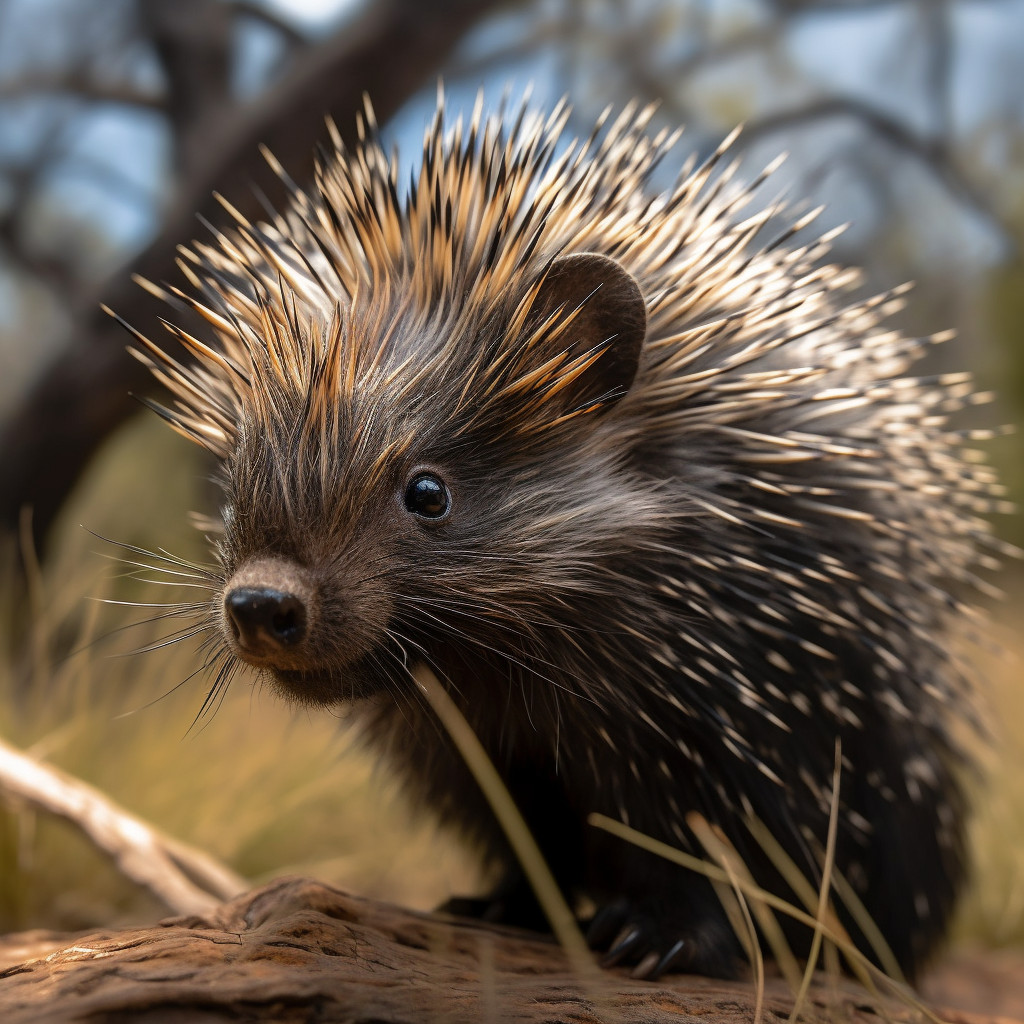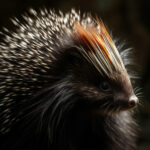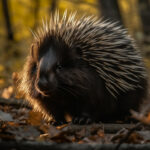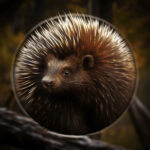Porcupines, known for their sharp quills and unique appearance, are fascinating creatures that can be found in various parts of the world. These small to medium-sized rodents are known for their ability to defend themselves against predators by raising and bristling their quills. While they may seem prickly on the outside, porcupines are actually quite gentle and shy animals. One intriguing aspect of their behavior is their choice of nesting sites. In this article, we will explore where porcupines nest and the factors that influence their selection. So, let’s delve into the world of porcupines and discover their cozy abodes!
Key Takeaways
- Porcupines nest in a variety of locations, including trees, caves, and underground burrows.
- They often create nests by gathering and arranging leaves, twigs, and other materials.
- Porcupine nests provide protection and insulation for the animals, especially during harsh weather conditions.
- Nests are typically built in secluded areas to minimize the risk of predation.
Understanding Porcupines: An Overview

Porcupines are fascinating creatures known for their sharp quills and unique defense mechanism. In this section, we will explore what attracts porcupines and where they typically make their homes.
A. What Attracts Porcupines
Porcupines are primarily herbivores, meaning they feed on plants. They are attracted to areas abundant in vegetation such as forests, woodlands, and grasslands. The availability of their preferred food sources, such as leaves, bark, twigs, and fruits, plays a significant role in attracting porcupines to a particular area.
These prickly creatures have a particular fondness for trees, especially the bark and tender shoots. They are known to target a wide range of tree species, including conifers and hardwoods. Porcupines are equipped with strong teeth that allow them to gnaw through the tough outer layer of tree bark, accessing the nutrient-rich inner layers.
B. Where Do Most Porcupines Live
Porcupines can be found in various regions across the globe, including North America, Africa, Europe, and Asia. However, the specific habitats and nesting habits of porcupines can vary depending on the species and geographical location.
1. North American Porcupines
North American porcupines are primarily found in the forests of Canada, the United States, and northern Mexico. These tree-dwelling porcupines are well-adapted to life in the trees and are often spotted in coniferous forests. They build their nests, known as “dens,” in the branches of trees, providing them with safety and protection from predators.
2. African Porcupines
African porcupines, on the other hand, are ground-dwelling creatures that inhabit a wide range of habitats, including savannas, grasslands, and rocky areas. They create burrows or dens in the ground, which serve as their shelter and nesting sites. These burrows provide them with protection from predators and the harsh elements.
It’s important to note that while porcupines have preferred habitats, they are adaptable creatures and can survive in various environments as long as their basic needs are met.
Porcupines are primarily nocturnal, meaning they are most active during the night. This behavior helps them avoid predators and find food more easily. They have excellent climbing and digging abilities, allowing them to navigate their chosen habitats with ease.
In conclusion, porcupines are attracted to areas with abundant vegetation and specific food sources. Their nesting habits vary depending on the species, with North American porcupines favoring tree dens and African porcupines opting for ground burrows. Understanding these aspects of porcupine behavior and habitat preferences can help us appreciate these intriguing creatures even more.
The Habitat of Porcupines: A Closer Look
A. Do Porcupines Live in Holes?
Porcupines are fascinating creatures that have adapted to various habitats around the world. When it comes to their living arrangements, porcupines do not typically live in holes like some other animals do. Instead, they create dens or shelters to protect themselves from predators and harsh weather conditions.
In North America, where the North American porcupine is found, these creatures often seek shelter in rocky crevices, hollow logs, or even abandoned burrows. They are skilled climbers and can navigate rocky terrain with ease, making these types of shelters ideal for their needs. Porcupines are also known to take advantage of man-made structures such as barns or sheds, using them as temporary shelters.
In Africa, where African porcupines reside, they tend to dig burrows in the ground to create their dens. These burrows can be quite extensive, with multiple chambers for different purposes. The burrows provide protection from predators and also serve as a safe space for porcupines to raise their young.
B. Do Porcupines Nest in Trees?
While porcupines are not known for living in holes, they do have a unique ability to climb trees. This tree-dwelling behavior is more commonly observed in certain species of porcupines, such as the North American porcupine.
Tree-dwelling porcupines have adapted to their arboreal lifestyle by developing strong claws and a prehensile tail, which helps them grip branches and maneuver through the treetops. They are often found in coniferous forests, where they feed on the bark, twigs, and leaves of trees.
These porcupines build nests, called “dreys,” in the trees. Dreys are constructed using branches, twigs, and leaves, providing a secure and elevated shelter for the porcupines. These nests are usually located high up in the trees, away from potential predators.
It is important to note that not all porcupines are tree-dwellers. Ground-dwelling porcupines, such as the African porcupine, prefer to live on the forest floor and create burrows instead of nesting in trees.
In conclusion, porcupines have adapted to various habitats and have different nesting habits depending on their species and location. While some porcupines create dens or burrows on the ground, others are skilled climbers and build nests in trees. These adaptations allow them to thrive in their respective environments and ensure their survival in the wild.
The Nesting Habits of Porcupines

A. Where Do Porcupines Build Their Nests
Porcupines, fascinating creatures known for their quills, have interesting nesting habits. These nocturnal animals can be found in various habitats across the world, including North America and Africa. When it comes to building their nests, porcupines display different behaviors depending on their species and environment.
Tree-Dwelling Porcupines
Tree-dwelling porcupines, such as the North American porcupine, are skilled climbers. They prefer to build their nests high up in the trees, providing them with safety and protection from predators. These nests, known as “dreys,” are constructed using branches, twigs, and leaves. The porcupines weave these materials together to create a sturdy and cozy shelter.
Tree-dwelling porcupines are excellent architects, carefully selecting the location of their nests. They often choose large trees with thick branches, allowing them to create a secure structure. These nests can be found in a variety of tree species, including conifers and hardwoods.
Ground-Dwelling Porcupines
On the other hand, ground-dwelling porcupines, like African porcupines, have different nesting habits. These porcupines do not climb trees but instead dig burrows in the ground. These burrows serve as their nests and provide protection from predators and harsh weather conditions.
Ground-dwelling porcupines are skilled diggers, using their strong claws to excavate burrows. These burrows can be quite extensive, with multiple chambers for different purposes. The main chamber serves as the nesting area, while other chambers are used for feeding or as escape routes.
B. What Does a Porcupine Nest Look Like
Porcupine nests, whether built in trees or underground, are designed to provide safety and comfort for these spiky creatures. Let’s take a closer look at what these nests look like.
Tree Nests (Dreys)
Tree nests, or dreys, are constructed using a combination of branches, twigs, and leaves. The porcupines weave these materials together to create a sturdy structure. The outer layer of the nest is often made of larger branches, providing a protective barrier against predators.
Inside the drey, the porcupine creates a cozy and insulated space using smaller twigs and leaves. This inner layer helps regulate the temperature and provides a comfortable resting place for the porcupine. The nest is typically large enough to accommodate a single porcupine, although some larger dreys can house a family.
Ground Burrows
Ground-dwelling porcupines create burrows as their nests. These burrows consist of a main chamber and several interconnected tunnels. The main chamber is where the porcupine rests and raises its young.
The burrows are usually dug in well-drained soil to prevent flooding. The entrance to the burrow is often hidden or partially covered, providing additional protection from predators. The tunnels within the burrow system allow the porcupine to move around and access different areas of its habitat.
In conclusion, porcupines exhibit fascinating nesting habits. Whether they build their nests high up in trees or dig burrows in the ground, these structures provide them with safety, protection, and a comfortable place to rest. Understanding these nesting habits helps us appreciate the resourcefulness and adaptability of these unique creatures.
The Reproductive Life of Porcupines
Porcupines, known for their sharp quills and unique appearance, have an interesting reproductive life. Let’s take a closer look at where these fascinating creatures choose to have their babies.
A. Where Do Porcupines Have Their Babies?
Porcupines, both in North America and Africa, have different nesting habits based on their environment and species. While some porcupines prefer to build their nests in trees, others opt for ground-dwelling burrows.
Tree-Dwelling Porcupines
Tree-dwelling porcupines, such as the North American porcupine, are skilled climbers. They make their homes in the branches of tall trees, where they construct elaborate nests called “dreys.” These dreys are made from a combination of twigs, branches, and leaves, providing a safe and cozy shelter for the porcupine and its offspring.
Tree-dwelling porcupines are well-adapted to their arboreal lifestyle. Their strong claws and prehensile tails allow them to maneuver effortlessly through the treetops. By choosing to nest high above the ground, they can avoid many potential predators and ensure the safety of their young.
Ground-Dwelling Porcupines
On the other hand, ground-dwelling porcupines, like the African porcupine, prefer to dig burrows in the earth. These burrows serve as their nests and provide protection from predators and harsh weather conditions.
Ground-dwelling porcupines are skilled diggers, using their strong claws to excavate extensive underground tunnels. These burrows can be quite complex, with multiple chambers for sleeping, nesting, and storing food. The porcupine’s young are born and raised in these underground sanctuaries, ensuring their safety and well-being.
Porcupine Breeding and Behavior
Porcupines are solitary animals, coming together only during the breeding season. The mating rituals of porcupines are unique and involve a series of vocalizations, scent marking, and physical interactions between males and females.
Once a female porcupine becomes pregnant, she will seek out a suitable nesting site to give birth. This is where the choice of tree or ground-dwelling habitat becomes crucial. The female porcupine will prepare the nest, lining it with soft materials like leaves, grass, and moss to create a comfortable environment for her young.
After a gestation period of around 112 days, the female porcupine will give birth to one or two offspring, known as porcupettes. These babies are born with soft quills that harden within a few hours. Despite their quills, porcupettes are incredibly adorable and rely on their mother for nourishment and protection.
Porcupine Family and Survival Strategies
Porcupines have developed various survival strategies to protect themselves and their young from predators. The most notable defense mechanism is their quills, which cover their bodies and can be raised when threatened. These quills are sharp and barbed, making it difficult for predators to attack or swallow them.
The porcupine’s nocturnal behavior also helps in avoiding predators. They are primarily active during the night, when many predators are less active or asleep. This allows them to forage for food and take care of their young under the cover of darkness.
In conclusion, porcupines have unique nesting habits depending on their species and environment. Whether they choose to nest in trees or dig burrows in the ground, these habitats provide safety and protection for the porcupine and its offspring. Understanding the reproductive life of porcupines gives us a glimpse into their fascinating world and the remarkable strategies they employ to ensure the survival of their species.
Interactions Between Porcupines and Other Species

Porcupines, with their unique appearance and defensive quills, often have interesting interactions with other species in their environment. Let’s take a closer look at some of these interactions and how they play out in the wild.
A. How Do Snakes Know Where Bird Nests Are?
Snakes, being skilled predators, have developed various strategies to locate their prey. One interesting phenomenon is their ability to locate bird nests, even when they are hidden high up in trees. But how do snakes know where these nests are?
-
Sense of Smell: Snakes have an excellent sense of smell, which allows them to detect the scent of birds and their nests. They can pick up on the odor of bird droppings, feathers, and even the scent left behind by the birds themselves.
-
Visual Clues: Snakes also rely on visual cues to locate bird nests. They may observe the behavior of birds, such as their flight patterns or repeated visits to a particular area, which could indicate the presence of a nest.
-
Acoustic Signals: Some species of snakes are capable of detecting the sounds made by birds. They can pick up on the chirping of chicks or the calls of adult birds, which helps them pinpoint the location of a nest.
-
Trial and Error: Snakes may also use a trial and error approach to find bird nests. They explore their surroundings, searching for potential nesting sites. Once they locate a nest, they may mark it with their scent or visually remember its location for future reference.
It’s important to note that not all snakes prey on birds or their nests. Some species primarily feed on rodents, insects, or other small animals. However, for those snakes that do target bird nests, their ability to locate them is a testament to their remarkable sensory capabilities.
In conclusion, snakes use a combination of their sense of smell, visual cues, acoustic signals, and trial and error to locate bird nests. This allows them to target vulnerable chicks or eggs as a source of food. The intricate interactions between snakes and bird nests highlight the fascinating dynamics of the natural world. Conclusion
In conclusion, porcupines are fascinating creatures that have unique nesting habits. They are known to create their nests, called dens, in a variety of locations, including trees, rocky crevices, and underground burrows. These nests provide them with protection from predators and harsh weather conditions. Porcupines are skilled climbers and often choose to build their nests high up in trees, where they can easily access food and stay safe from ground-dwelling predators. They use a combination of twigs, branches, and leaves to construct their nests, creating a cozy and secure environment. Understanding where porcupines nest is essential for their conservation and management, as it helps us protect their habitats and ensure their survival in the wild. By respecting their nesting sites and providing them with suitable environments, we can coexist with these remarkable creatures and appreciate the important role they play in our ecosystems.
Frequently Asked Questions
What does a porcupine nest look like?
A porcupine nest, also known as a den or burrow, often looks like a small cave or hole in the ground or tree. For ground-dwelling porcupines, these burrows can be in rock piles, caves, or hollow logs. Tree-dwelling porcupines, on the other hand, build nests in the branches or hollows of trees.
Where do porcupines build their nests?
Porcupines build their nests in a variety of places depending on their species. Ground-dwelling porcupines, like the African porcupines, often build their nests in underground burrows, rock crevices, or brush piles. Tree-dwelling porcupines, like the North American porcupines, typically nest in trees, either in the hollows or on branches.
Where do most porcupines live?
Porcupines are found in a variety of habitats across the world. North American porcupines inhabit forests, deserts, and grasslands across North America. African porcupines are typically found in rocky outcrops and hills across sub-Saharan Africa. Their specific living conditions depend on their adaptation to the environment.
Where do porcupines nest?
Porcupines nest in a variety of locations based on their species and habitat. Ground-dwelling porcupines often nest in burrows or dens on the ground, while tree-dwelling porcupines nest in trees.
Do porcupines live in holes?
Yes, many ground-dwelling porcupines live in holes or burrows. These burrows provide them with shelter from predators and harsh weather conditions, contributing to their survival strategies.
Do porcupines nest in trees?
Yes, tree-dwelling porcupines, like the North American porcupines, do nest in trees. They build their nests in the hollows or on the branches of trees.
Where do porcupines have their babies?
Porcupines usually have their babies, known as porcupettes, in their nests. For ground-dwelling porcupines, this would be in a burrow or den. For tree-dwelling porcupines, this would be in a nest in a tree.
What attracts porcupines?
Porcupines are attracted to areas that provide ample food sources, such as trees and plants for bark, leaves, and fruit. They are also attracted to areas that provide suitable shelter, like forests for tree-dwelling porcupines and rocky areas for ground-dwelling porcupines.
How do snakes know where bird nests are?
Snakes have a keen sense of smell and can detect the scent of bird eggs and chicks from a distance. This is not directly related to porcupines, but it’s an interesting fact about one of the potential predators in a porcupine’s environment.
What are some porcupine habitat facts?
Porcupines can adapt to various habitats, from forests and deserts to grasslands. They are nocturnal creatures and spend their days in dens or burrows to avoid predators. Their sharp quills are a primary defense mechanism. Depending on the species, porcupines may be ground-dwelling or tree-dwelling, which significantly influences their lifestyle and nesting habits.




